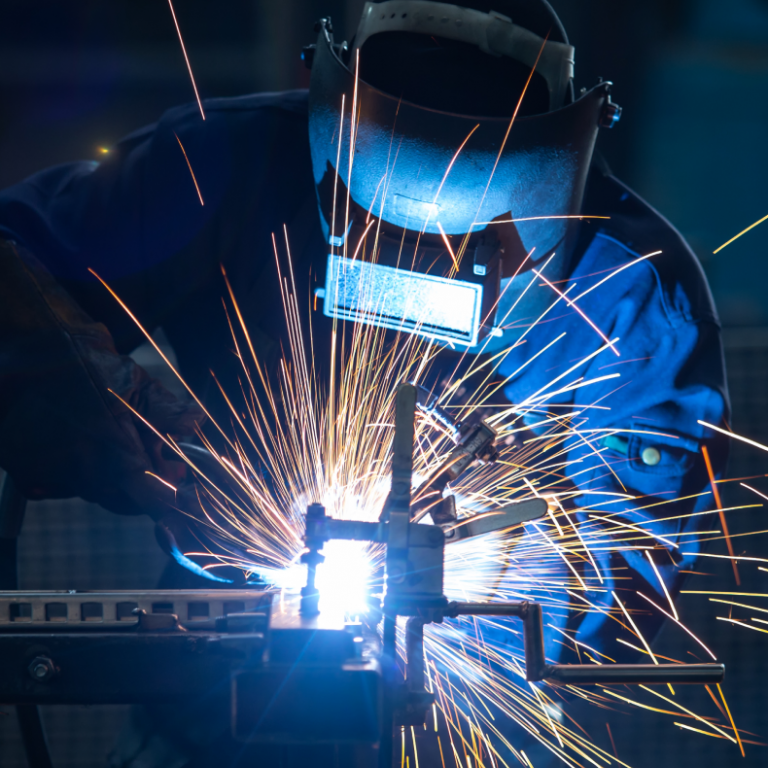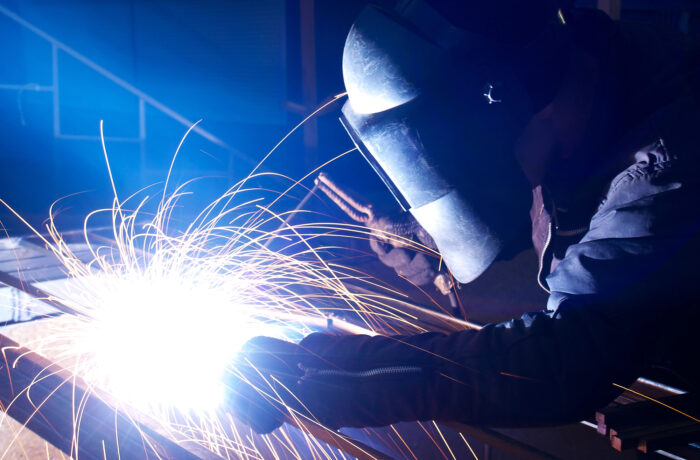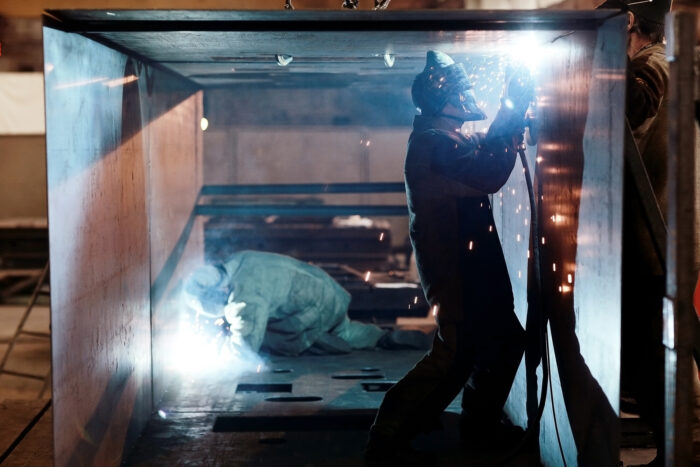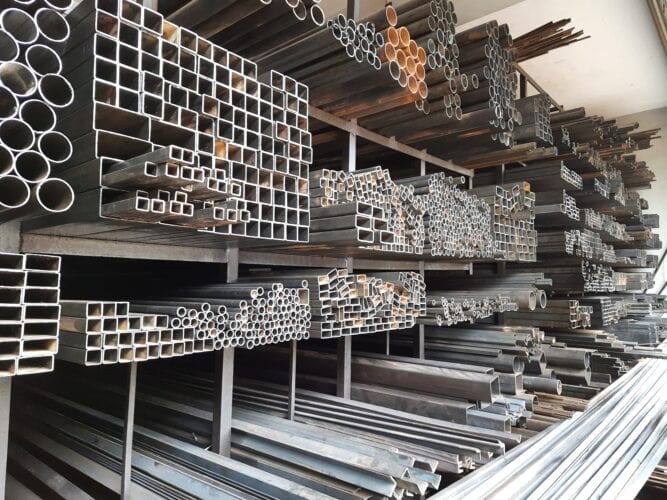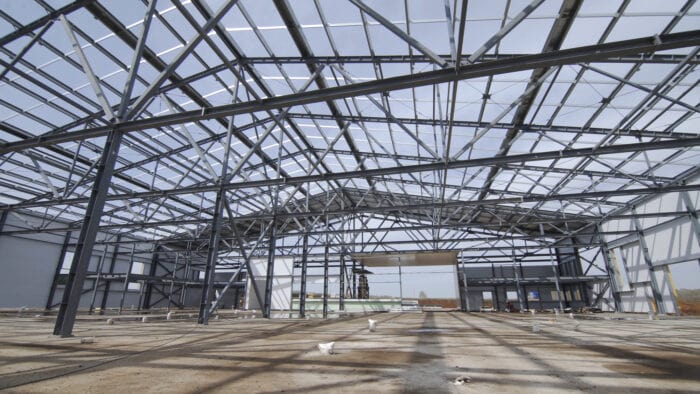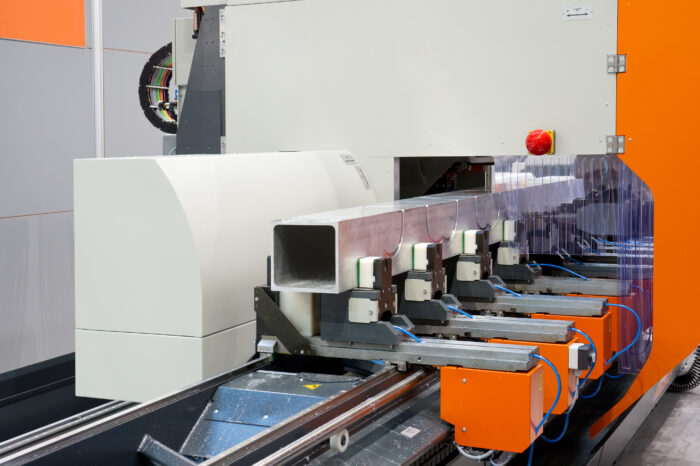Ever wonder why aluminium is so popular in the Australian economy? Not only is our country the second largest producer at 20.3 million tonnes in 2022 but we are also the world’s largest exporter with the industry contributing more than $13 billion in export revenue to our economy.
Aluminium is a versatile and widely used material in fabrication due to its unique properties and advantages such as its excellent strength-to-weight ratio, corrosion resistance and aesthetic appeal.
It is lightweight and provides good structural integrity, which is why it is commonly used in applications such as support structures, frames and trusses. From heavy industrial to everyday commercial and domestic applications, we’ll learn more about the uses of aluminium in fabrication.
What is aluminium used to make?
Aluminium is a versatile metal for many applications. In heavy industrial use, it is suited to the transportation, electrical, aerospace, shipbuilding, construction and packaging industries. Aluminium is also handy for everyday domestic and commercial consumer goods, utensils, window and door frames, refrigerators, white goods and laptops.
The material is a popular choice for car bodies, aircraft structures, engines, bicycle frames, engine components, staircases, railings, heat exchangers, boilers, piping systems, industrial fans, conveyor systems, solar panels, imaging equipment and much more.
Aluminium’s utility and value intensify when mixed with other metals to create alloys – making it as strong, flexible and as impermeable as steel in any metal fabrication application in Sydney or Australia.
Why is aluminium suitable for so many applications?
Aluminium has built a well-deserved reputation as a versatile and flexible metal. Fabrication of this metal is meritorious enough to rival any stainless steel fabrication process in Sydney, Melbourne, or anywhere in Australia. Here are some reasons why aluminium is suited to many applications:
Lightweight
Aluminium has a weight equivalent to one-third that of steel, making it an excellent choice for applications that rely on its lightweight advantage. For example, using aluminium alloys in modern vehicles has contributed to fuel efficiency, better performance and easier handling to avoid accidents.
Structural integrity
Despite being light in weight, aluminium, when mixed to create an alloy, is just as strong as steel with a high strength-to-weight ratio, allowing it to withstand high loads and stresses. Since it has excellent structural integrity, it is a good choice for frames, trusses and other structural applications where strength is essential.
Resistant to corrosion
Aluminium has a thin oxide layer on the surface, which acts as an excellent corrosion barrier – making it suitable for applications exposed to humidity, moisture and other environmental conditions. It also doesn’t require a significant amount of protective coatings, which makes it easier to maintain and lengthens its lifespan.
Flexible
Aluminium is soft, light and incredibly easy to shape into complex designs. Processes such as welding, rolling, cutting, joining, stamping, forging and casting create different shapes for parts and structures. It is ideal for applications requiring high malleability such as automotive panels and parts, aerospace parts, beams, tubes and frames.
100% recyclable
Aluminium is 100% recyclable without compromising any of its advantageous properties. It can be used repeatedly, making it an extremely sustainable metal choice for many fabrication processes. In fact, according to the Australian Aluminium Council, nearly 75% of all produced aluminium till today is still used.
Electrical conductivity
Aluminium possesses excellent electrical conductivity, making it ideal for electrical applications such as power transmission lines, electrical enclosures, wiring, and conductive components. Its high conductivity allows for efficient electricity flow while minimising energy loss.
What are the processes of aluminium fabrication?
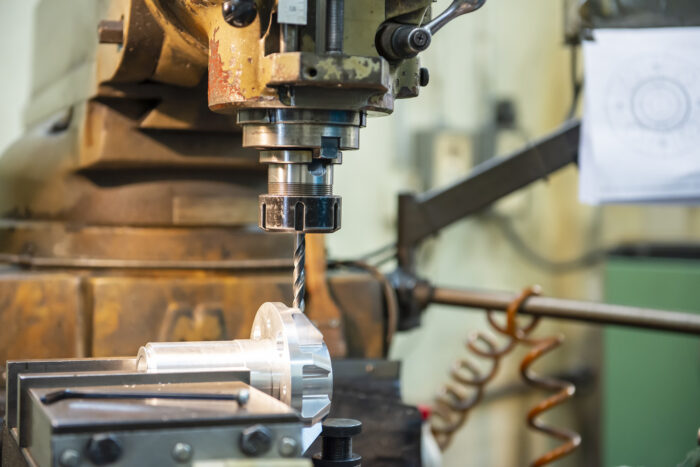
Aluminium fabrication is the process of shaping the material into different shapes and structures for a range of domestic, commercial and industrial purposes. Different fabrication processes such as cutting, joining, shaping, welding, finishing and machining will be used to create a desired shape, structure or part.
Cutting
Using a range of saws and cutters, including oxy or plasma cutters, aluminium can be cut precisely to achieve the desired final shape. Some cutting methods include sawing, shearing, laser cutting and waterjet cutting.
Machining
Parts may undergo machining processes such as drilling, grinding and milling to achieve precise dimensions and smooth finishes. Sometimes, CNC machines may also be used for high-precision, complex projects.
Welding
Aluminium can be welded using methods such as arc welding, TIG welding, MIG welding, gas metal arc welding and more to fuse two pieces of metal together in the fabrication process.
Cropping
Using cropping machines, fabricators will cut out sections of the metal to the desired shape and length, ensuring it is smooth and precise.
Finishing
To ensure the metal lasts longer, different finishes such as electroplating, powder coating and anodising may be applied.
What are the steps involved in planning an aluminium fabrication project?
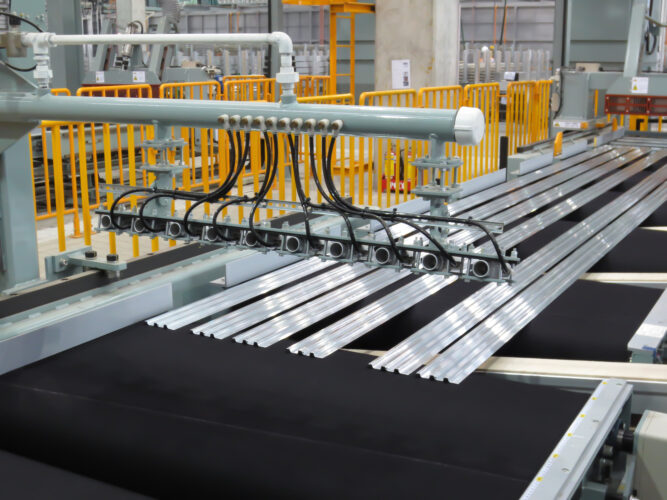
An experienced aluminium fabrication professional will not cut any corners and follow specific steps to ensure a high-quality final product. Effective management will ensure the project stays on track, within budget and meets the desired specifications. Some of the steps involved include:
Define the scope
The first step is to define the scope and nature of the project. This involves the use, whether for a specific product, modification of existing components or prototype development. Technical specifications such as tolerances, loads, dimensions, material specifications, industry regulations and surface finishes will also be determined.
Choose the right material and alloy
Then it comes down to identifying the project’s best material and alloy mix. This will involve considering intended use, operating conditions, environmental exposure, load-bearing capacity and more to choose the right material.
Design the product prototype
The next step is to design the prototype and ensure it meets the specifications of the project so that the final outcome is exactly as planned. When this step is done properly, there is very little risk of error during the fabrication process.
Finalise fabrication techniques
Depending on the final outcome, various fabrication techniques such as welding, cutting, machining, cropping and finishing may be implemented to achieve the desired result. Each technique has its own merit, and a combination of processes will be used either onsite or in an offsite facility or a combination of both.
Monitor progress
Regularly reviewing progress and updating the project scope may be necessary to accommodate any changes or unforeseen situations. When you keep track of the project, you can make quick changes to ensure the final outcome is successful without any major delays.
Test for quality
Implementing quality control measures can ensure the final product meets all standards for metal fabrication in Australia. Inspections, dimension checks and testing can verify the integrity of the final aluminium product.
Conclusion
The versatility of aluminium makes it suited to many applications, from large industrial, construction and transportation components to meeting the needs of some of Australia’s most common household goods.
An experienced aluminium fabrication professional in Sydney such as Prime Fabrication can help the material reach its fullest potential in practically any application. Our team of experts will help with the design and material choice at the start. We also monitor progress at every step and ensure strict quality control measures are followed to achieve excellent quality at the very end.
For more information, feel free to contact us or check out some of our work.

